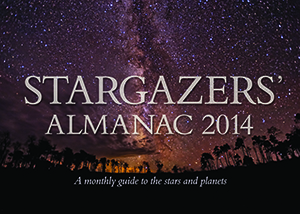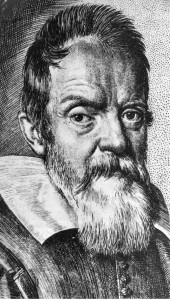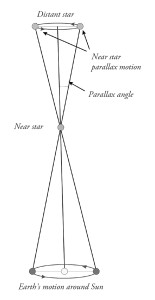Galileo Galilei
by Floris Books • 1 November 2013 • Philosophy of the Natural World • 0 Comments
Floris publishes a range of books which explore our physical world, from sustainability and alternative science to astronomy. One of our most popular titles in this range is the Stargazers’ Almanac. This post is adapted from the 2014 edition.
Galileo Galilei
Adapted from the feature article in the Stargazers’ Almanac 2014
Next year will mark 400 years since Galileo Galilei was accused of heresy for supporting Copernican theory. Until the time of Copernicus (1473–1543) the general view of the world was geocentric, that is, with the Earth being in the centre of the universe and Sun, Moon and planets revolving around it. Nicolaus Copernicus postulated that instead of the Earth, the Sun stood in the centre, with the planets including the Earth moving around it (the heliocentric model). We take this for granted today, and it is difficult for us to imagine the fundamental shift in thinking this caused at the time.
Galileo Galilei was born near Pisa in Italy in 1564, twenty-one years after Copernicus’ death. At the age of twenty-five he was appointed professor of mathematics (which included astronomy) at the University of Pisa. In 1609 he heard about the first telescope that had been invented in Holland. He set about making his own with a magnification of 30 times and used it to observe the skies. His three main discoveries with the telescope were that the Moon had mountains, Jupiter had moons and Venus had phases. These discoveries made Galileo a champion of the Copernican theory. He was convinced his observations had supplied the proof of its truth.
However, to prove that the Sun stood still and the Earth moved, the differing angle, the parallax, of a star would need to be measured six months apart. The stars being very far away, no one succeeded in measuring a difference until the nineteenth century; only in 1838 did Friedrich Bessel measure the parallax of a star. Despite this technical difficulty, Galileo enthusiastically proclaimed the truth of the Copernican system. Instead of using the academic Latin of his day, Galileo proclaimed his convictions in the popular Italian language, and this zeal soon brought him into conflict with the Church.
Thomas Caccini, a Dominican priest, began to preach against Galileo’s ideas in 1614, accusing him of promoting ideas contrary to the teaching of the Bible; in other words, accusing him of heresy. Galileo went to Rome to clear his name, but was ordered to abandon his Copernican opinions.
For a time Galileo managed to keep out of further controversy, but some years later published a book, Dialogue on the Two Chief World Systems, Ptolemaic and Copernican. In the book Salviati, a Copernican scientist, and Simplicio, an Aristotelian, debate and Simplicio loses all the arguments. Unfortunately Simplicio (Italian for simpleton) bore a remarkable resemblance to the Pope, and this did not endear Galileo to the Church! This time it led to a trial of heresy, where he was found guilty, required to repent, and placed under house arrest. The famous legend that he muttered ‘and yet it moves,’ after recanting is certainly untrue, but it is almost certainly true that he thought it.
……………………………………………………………………………………………………………………………………………
 Read the full article in the Stargazers’ Almanac 2014. This illustrated month-by-month guide to the stars and planets is designed for observation without a telescope, making it perfect for beginners, children and backyard astronomers.
Read the full article in the Stargazers’ Almanac 2014. This illustrated month-by-month guide to the stars and planets is designed for observation without a telescope, making it perfect for beginners, children and backyard astronomers.
You may also be interested in some of our other books on astronomy, including Eclipses 2005-2017, Sky Phenomena and Movement and Rhythms of the Stars.

